A small adventure
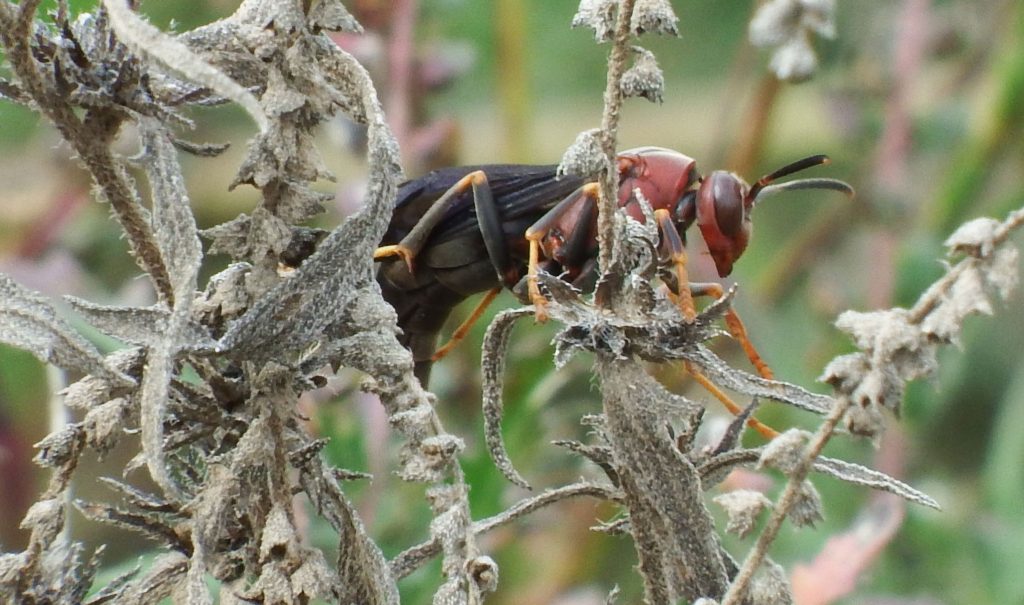
The processes of the natural world operate at all scales, from tiny to enormous. But however large or small, complex or simple, every living thing is pushed by two drives: stay alive and reproduce. Knowledge of the natural world is essentially the details of how each species manages these drives. The natural world in our Park is on a small scale. But the processes are identical and it is no less awe inspiring and thrilling, especially if you are on a voyage of discovery.
Monday’s voyage started in the eastern half of the miracle prairie. I was hoping to find birds (aren’t I always), but I heard nothing. I didn’t just move on because a squad of dragonflies was patrolling 3-7 feet off the ground. That told me there were enough insects to interest the dragonflies, who never stop eating, and that made it worth taking a look.
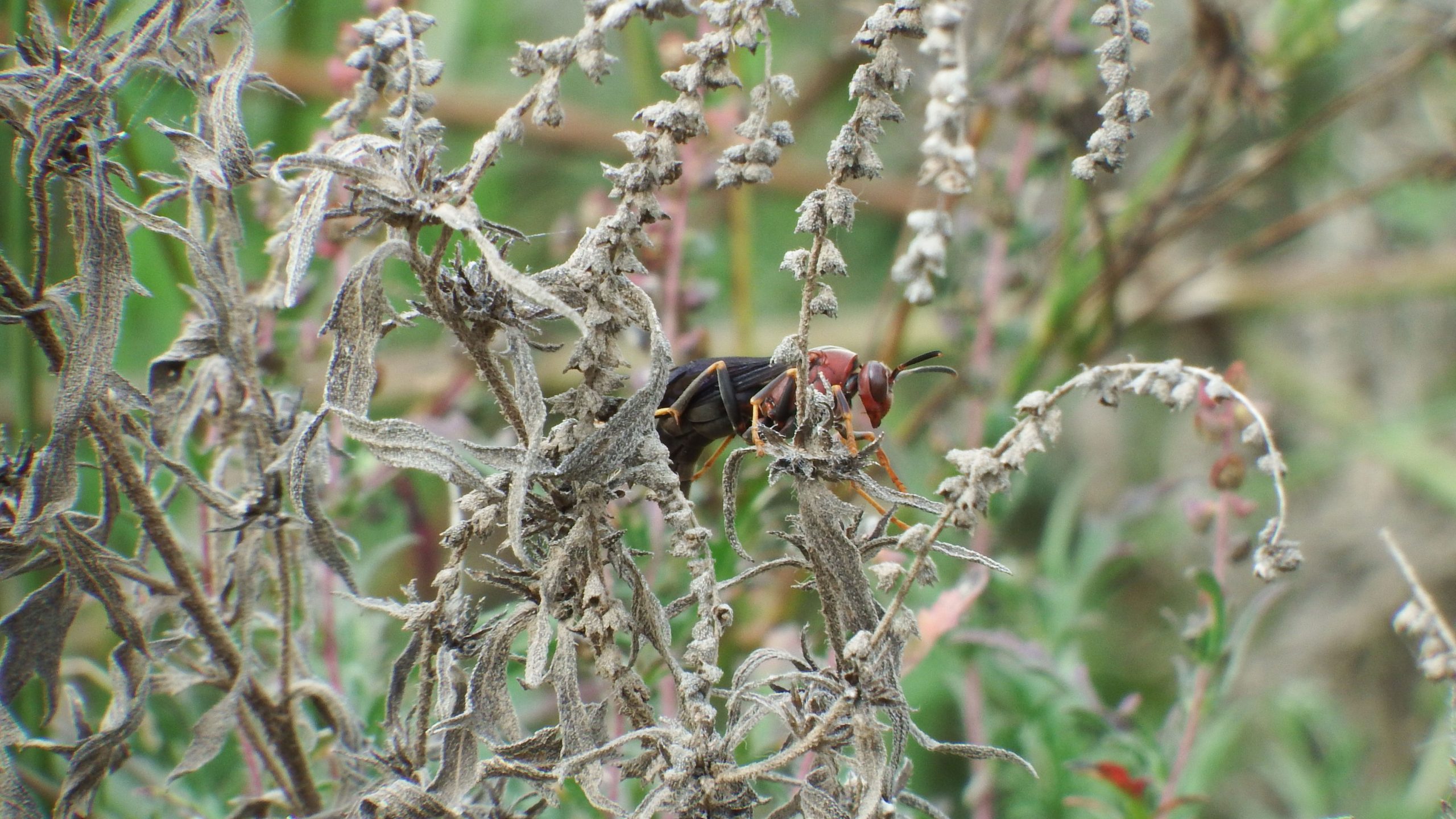
You can just make out our wasp creeping through the dead foliage
I moved about ten feet off the path into the prairie and found a hunter lurking. She is a metricus paper wasp and her photograph is at the top of this post. It doesn’t capture how hidden and stealthy she was, so I posted a wider view on the left. This is something of a rare sighting because she should be asleep or dead! Each spring, groups of female paper wasps join together to make a nest and create a colony that will last until next winter. Paper wasps have very complex social lives and tend to their young much the way birds do. These wasps feed their young by regurgitating partially digested caterpillars (this wasp’s primary food) into the waiting mouths of its larvae.
The females who found of a colony likely will not live to see the end of summer, but a few of the last females born to the colony will hibernate over winter and emerge next spring to start their own colonies. This is one of those females who will, next year, create generations. But right now, she should be hibernating. I imagine she woke to Monday’s warmth and decided that a quick snack might be in order. I found her creeping through the dead foliage, likely looking for something with a soft body. The Cuban anole I saw nearby was also looking for a snack. I think that wasp would be a bit too big for him, though. The anoles can snatch flying insects out of the air. The metricus wasp can overpower only slow and soft-bodied prey.
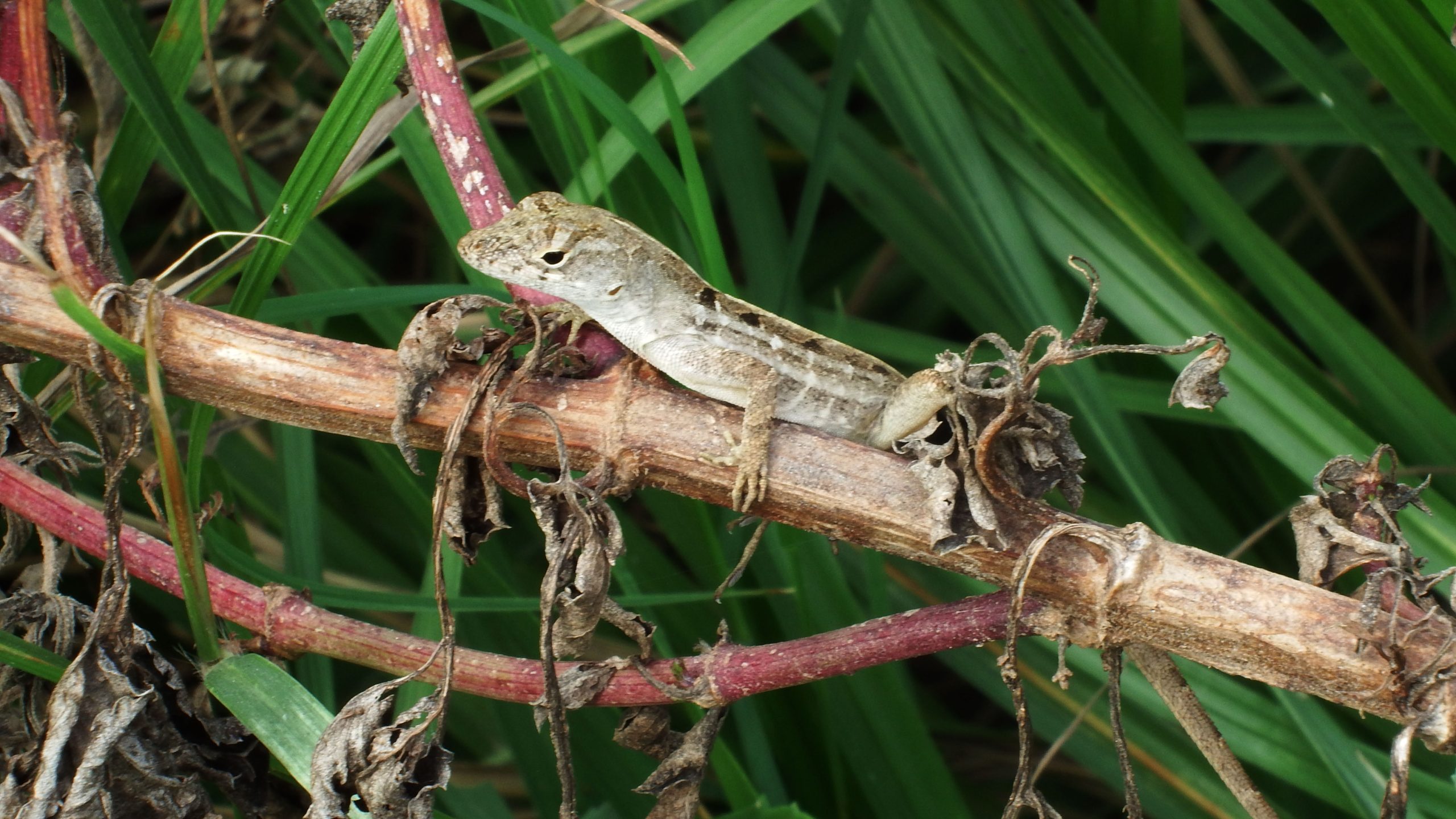
Cuban anole
The miracle prairie is on a single hillside, but it contains two very different collections of plants. The eastern half is a diverse and vibrant prairie. The western half is a strangely different. In the spring, the western half of the prairie was covered in bluebonnets. Now, it is covered in little bluestem, a native grass that is foundational to our coastal prairie ecosystem. While the little bluestem is very welcome, and completely native, there is almost nothing except little bluestem there. It’s practically a monoculture.
I decided to venture in because maybe there was more going on than I suspected. I wandered about 10 feet into the prairie and wasn’t surprised to find it very quiet. The ground itself was different, silty. I imagine that another crop or two of bluebonnets, which are in the pea family and enrich poor soils, and this side will start to enjoy a bit more diversity. However, I am so very glad I did wander ten feet into the silty side of the prairie because when I turned around to look back at the bayou, I noticed a stand of black willow trees. It is a young but well established stand, and somehow, with all the time I spend in the Park, I had never noticed it.
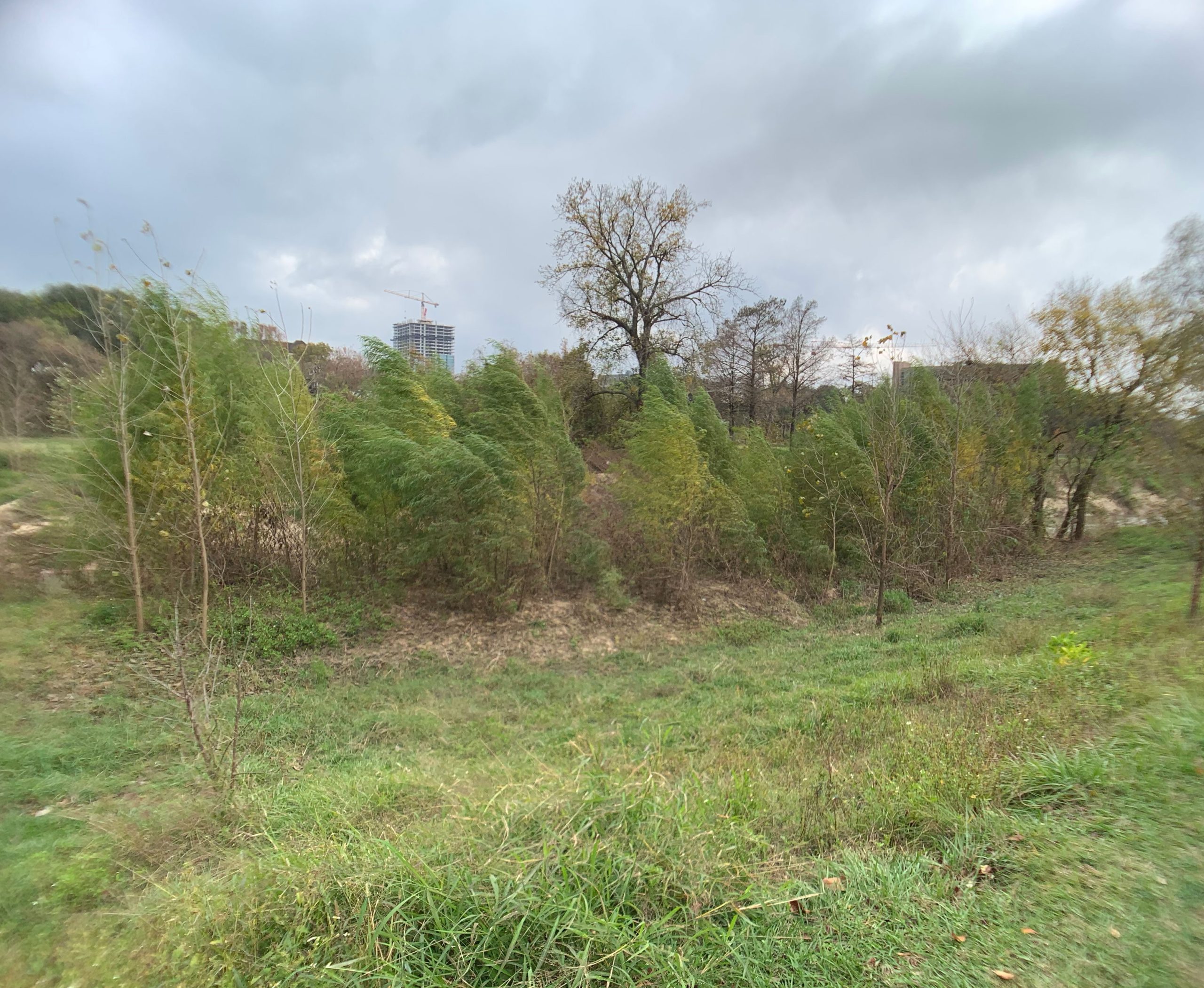
The willow grove
I am always excited to find an area of the Park with a different colony of plants (like a willow grove) because different micro ecosystems support different assortments of animals. And I was especially excited to notice a willow grove because black willows are one of our beavers’ favorite food.
So began the overland hike. Wading off the paths in the Park is absolutely necessary if you want to find cool stuff, but I caution anyone who wants to visit the willow grove that by the time you arrive there, you will be covered with sticky burrs and the needle-like seeds of Bidens alba.
But if you brave the journey, you will find a willow sapling recently taken by a beaver. Or, you can spare your clothing and skin and just look at this photo!
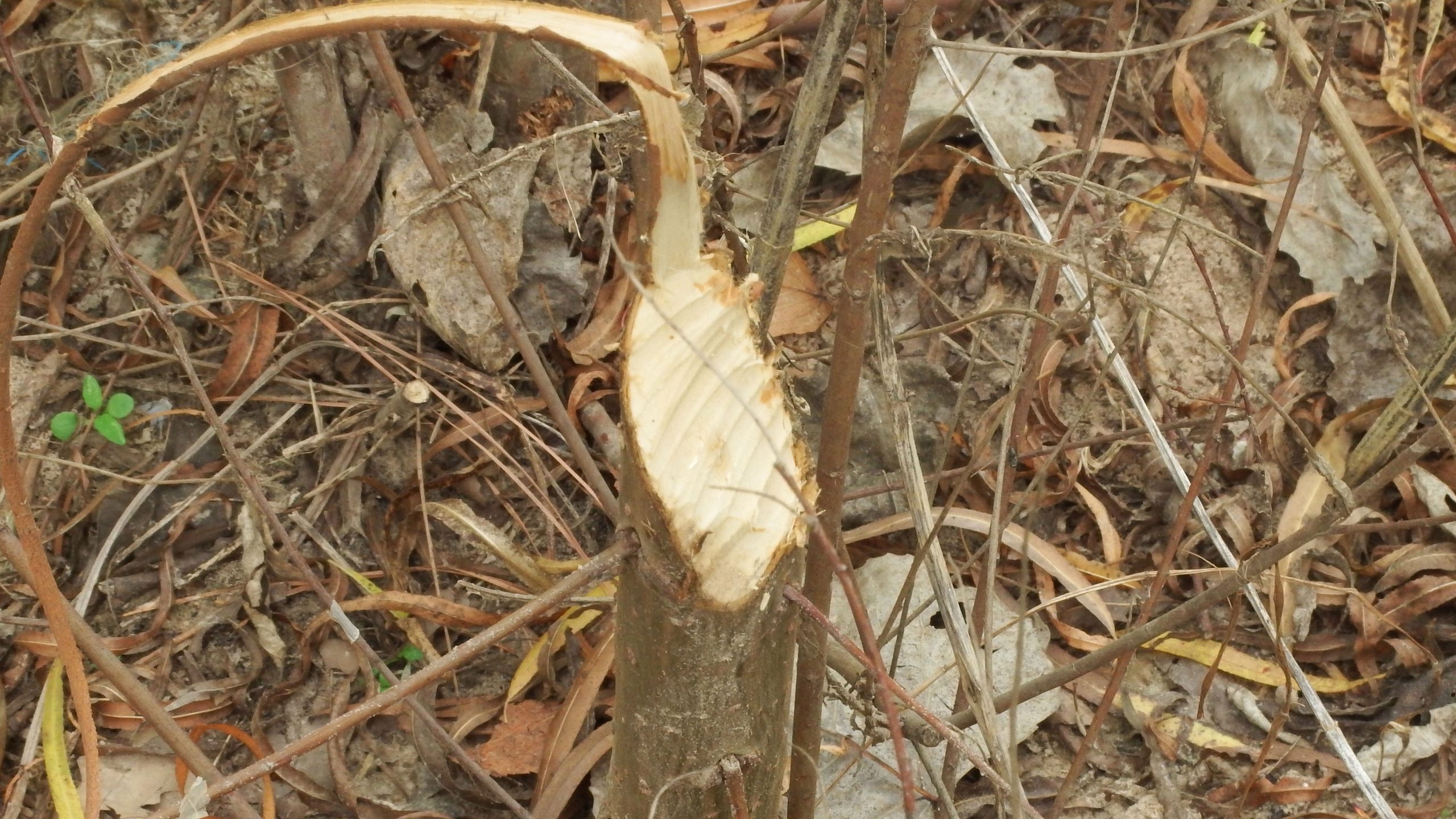
A beaver did this!
There is a moment in heroic movies where following a hazardous journey, the heroine reaches an opening in the forest, or the edge of the mountain where she beholds a beautiful vista.
I did that, only on a much smaller scale!
Once I emerged on the bayou side of the willow grove, I was almost to the lapping edge of the bayou. And on the shore was the loveliest patch of lavender flowers and a sedge wren calling.
I had started out this adventure in search of that sedge wren, and after all that, I had found her, or him.
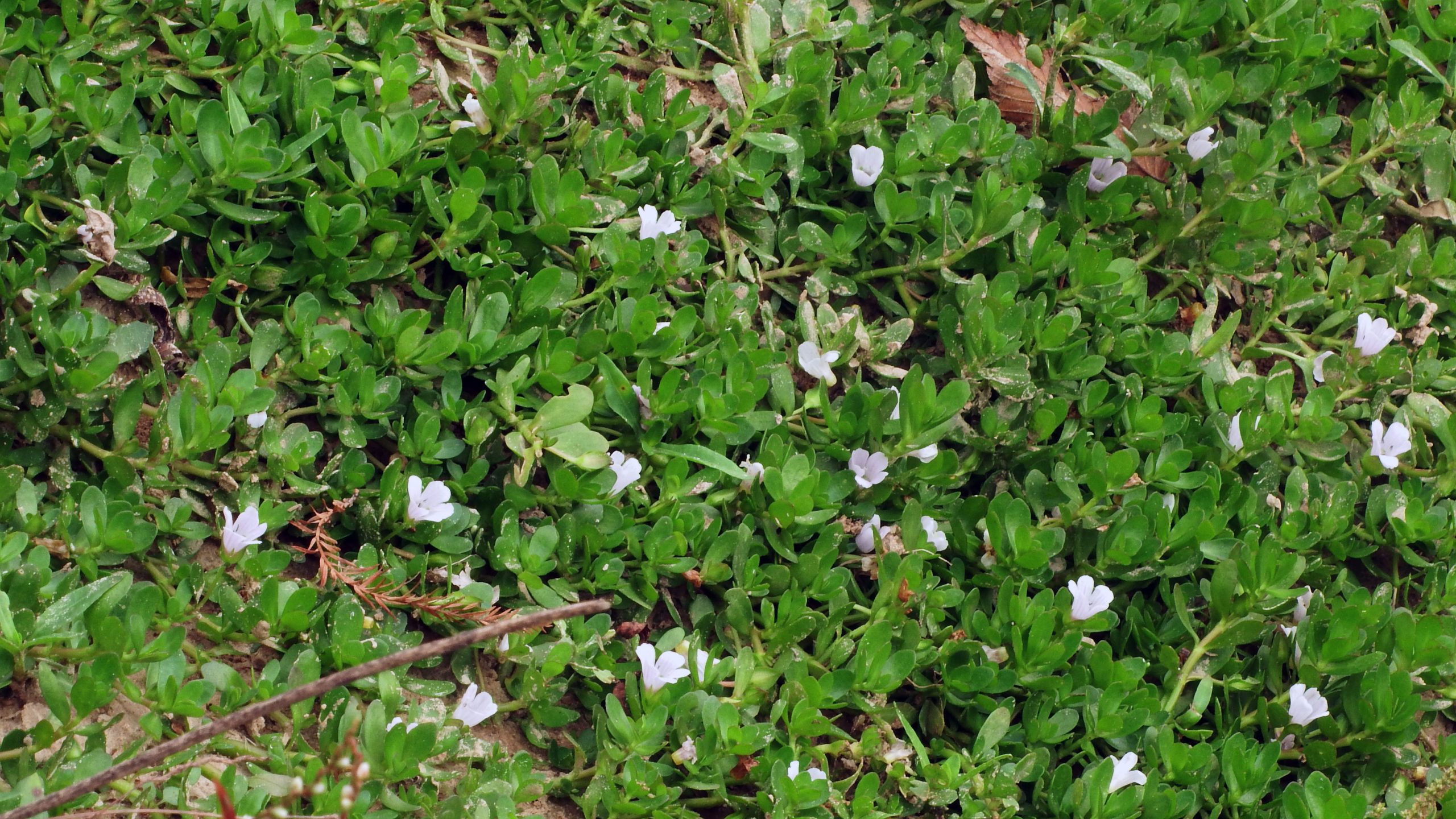
Herb-of-Grace (Bacopa monnieri)
The lovely mat of pink/lavender flowers are what I think to be Herb-of-Grace (Bacopa monnieri). Behind that was a lovely willow primrose.
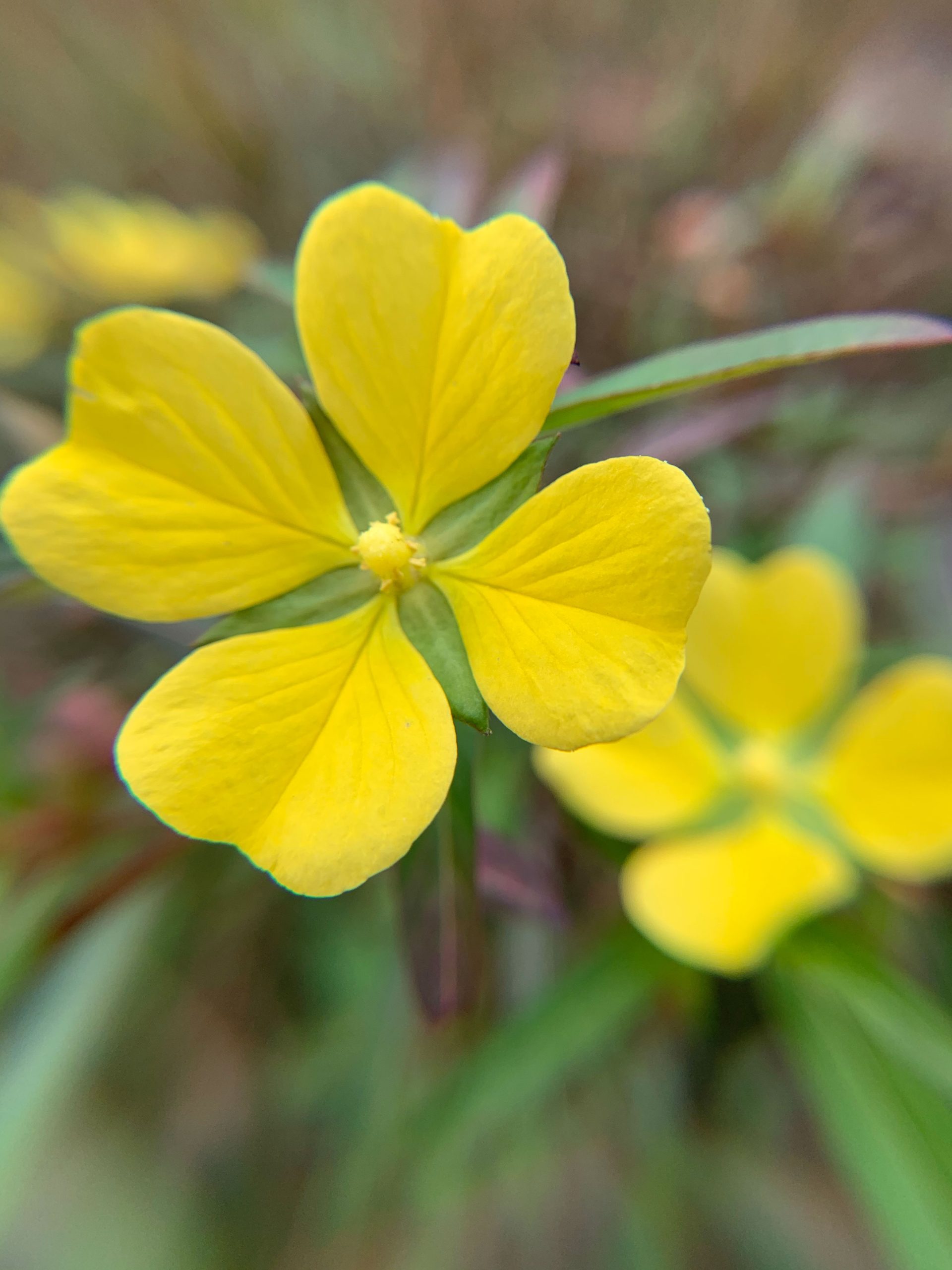
Willow primrose
And then I had to climb back out, through the willow grove, through the burs and needles. Another adventure in the books!

